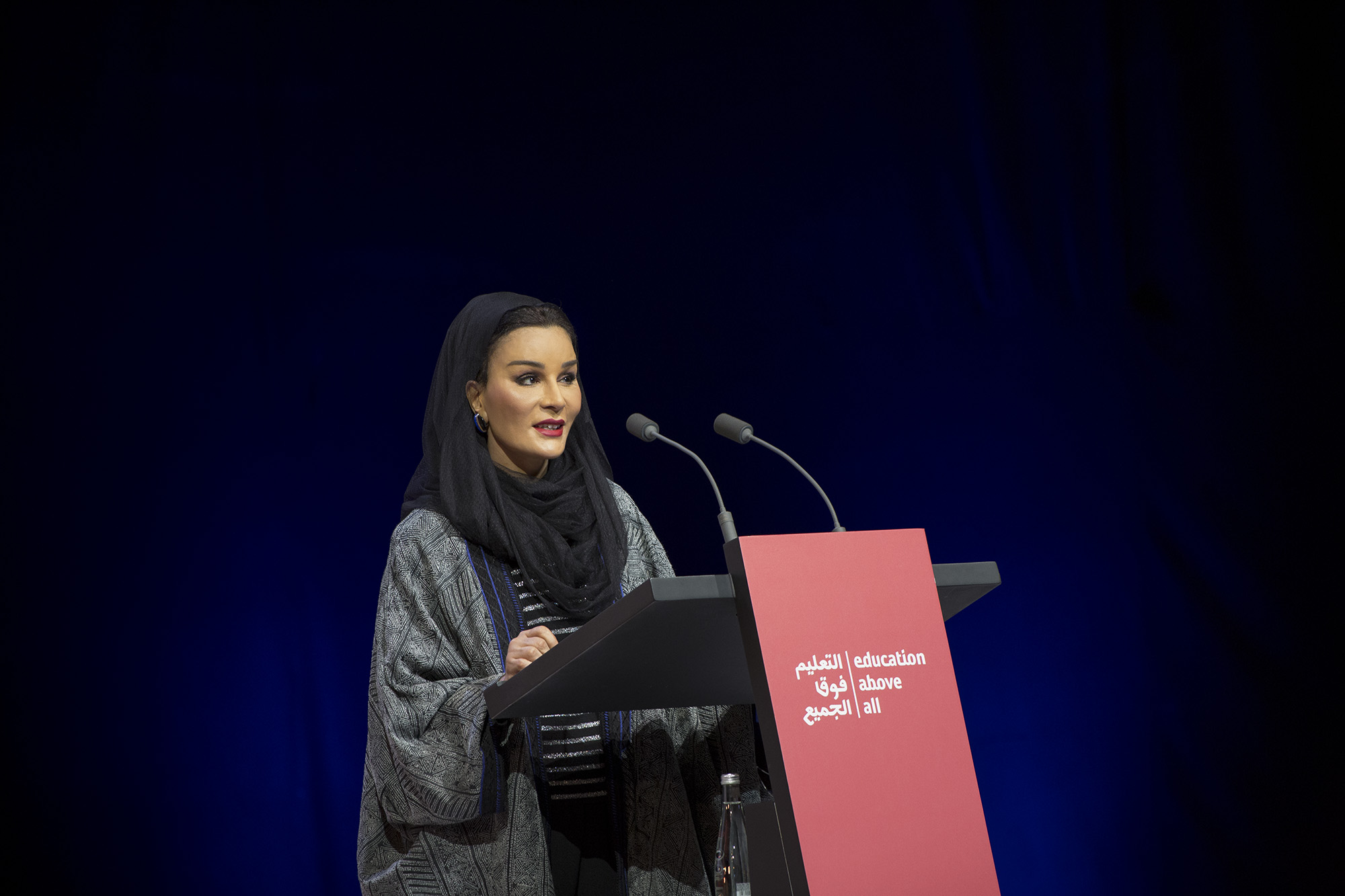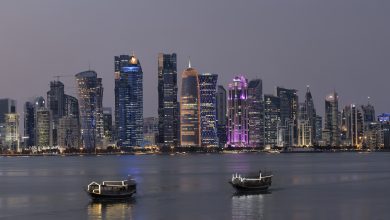EAA Foundation Event Calls for Global Commitments
“التعليم فوق الجميع” تدعو للوفاء بالالتزامات العالمية
QNA
Doha: In a national commemoration of the second UN International Day to Protect Education from Attack and complementing Education Above All (EAA) Foundation’s global high-level panel discussion on the day, EAA Youth Advocates and youth supported by its Reach Out To Asia (ROTA) programme called for a Code of Conduct that can be actioned to honor global commitments towards the protection of education from all forms of attack, and to bring perpetrators to justice.
Co-organised by Education Above All Foundation, the Qatari National Commission for Education, Culture and Science, Qatar Fund For Development (QFFD), UNESCO Regional Office in Doha, and UNICEF, the event brought together key stakeholders, HBKU, CARE International, Right to Education Initiative, Search For Common Ground and most importantly it includes youth voices and education advocates. It comes as recently released figures from the Global Coalition to Protect Education from Attack (GCPEA) showed an alarming increase in the number of attacks on education globally, with 2,400 documented attacks in 2020, an increase of a third since 2019.
“Attacks on education across the world continue to violate the rights of children, thereby negatively affecting their future and making them targets for further abuse and exploitation. International stakeholders must assume their responsibility towards the next generation, to ensure all children have access to quality and equitable education; to enhance the protection of education from all risks; and to ensure those responsible for deliberate attacks on education are held accountable,” said HE Dr. Mohammed bin Abdul Wahed Al Hammadi, Minister of Education and Higher Education and President of Qatar National Commission for Education, Culture and Science, in his keynote address.
Noting EAA’s active role in creating strategies to ensure children and youth receive undisrupted access to education, HE Ahmad Awad bin Mubarak, Yemen’s Minister of Foreign Affairs, added: “Education is essential to societal development and progress. Its impact stands out even more when a growing number of out of school children face the threat of military recruitment and displacement to remove areas where educational facilities are less accessible.”
HE Khalifa Jassem Al Kuwari, Director General of QFFD, said: “Today, our world is struggling to protect education during conflict and crisis. With more than 100 million children across the globe living in conflict-affected areas, it is our responsibility to advocate for sustainable solutions to ensure access to quality education for all. Our children’s future is in our hands, so let us all unite to protect and save the future generations.”
Following two panel discussions on the importance of data availability to address gaps in education protection, and emerging challenges, data mechanisms and approaches, youth from Yemen, South Sudan,
Nigeria, Syria and Palestine shared their perspectives on the protection of learning in all circumstances as part of a special segment on youth voices from conflict-affected areas.
The event also saw participation from Nasser Al Hanzab, UNESCO Qatar Representative; Anthony MacDonald, Head of Office UNICEF Doha; Anna Paolini, UNESCO Regional Office Director; and a number of senior officials.
قنا
الدوحة: دعا مناصرو قضايا الشباب لدى مؤسسة /التعليم فوق الجميع/ والشباب الحاصلون على دعم برنامج “أيادي الخير نحو آسيا”، إلى اعتماد مدونة سلوك يمكن تفعيلها للوفاء بالالتزامات العالمية تجاه حماية التعليم من جميع أشكال الهجمات وتقديم المرتكبين إلى العدالة.
جاء ذلك خلال حلقة نقاش نظمتها المؤسسة احتفاء باليوم الدولي لحماية التعليم من الهجمات واستكمالاً لحلقة النقاش رفيعة المستوى التي نظمتها المؤسسة الخميس الماضي بالتعاون مع عدد من المنظمات الدولية والهيئات الإغاثية.
وقد عقدت هذه الفعالية في أعقاب صدور التقرير الأخير عن التحالف العالمي لحماية التعليم من الهجمات، والذي أظهر ارتفاعاً مقلقاً في عدد الهجمات على التعليم في كل أنحاء العالم، إذ شهد العام (2020) عدد 2,400 هجوم موثق بنسبة ارتفاع تبلغ 33 بالمئة منذ العام 2019.
وخلال الفعالية أكد سعادة الدكتور محمد بن عبد الواحد الحمادي، وزير التعليم والتعليم العالي ورئيس اللجنة الوطنية القطرية للتربية والثقافة والعلوم، أن الهجمات على التعليم تنتهك حقوق الأطفال، ما يؤثر سلباً على مستقبلهم ويجعلهم أهدافاً لمزيد من الانتهاكات والاستغلال. متابعا أنه “يتعين على أصحاب المصلحة الدوليين أن يتحملوا مسؤولياتهم تجاه الجيل المقبل لكي نضمن وصول جميع الأطفال إلى التعليم الجيد والمنصف ونعزز حماية التعليم من المخاطر كافة ونحرص على محاسبة المسؤولين عن الهجمات المتعمدة على التعليم”.
من جانبه أشاد سعادة السيد أحمد عوض بن مبارك وزير الخارجية اليمني بالدور الفاعل لمؤسسة التعليم فوق الجميع في وضع الاستراتيجيات لضمان وصول الأطفال والشباب إلى التعليم دون انقطاع، مضيفاً: “التعليم عنصر أساسي للتنمية المجتمعية والتقدم، ويتجلى تأثيره بوضوح أكبر حين يواجه عدد متزايد من طلاب المدارس تهديد التجنيد العسكري والنزوح إلى المناطق النائية، حيث يصعب الوصول إلى المنشآت التعليمية”.
بدوره لفت سعادة السيد خليفة جاسم الكواري، المدير العام لصندوق قطر للتنمية إلى ما يواجهه العالم اليوم من صعوبات جمة في حماية التعليم خلال النزاعات والأزمات. مضيفا بالقول “وفيما يعيش أكثر من 100 مليون طفل حول العالم في المناطق المتأثرة بالنزاعات، تكمن مسؤوليتنا في الدعوة إلى إيجاد الحلول المستدامة لضمان وصول الجميع إلى التعليم الجيد. إن مستقبل أطفالنا بين أيدينا، فدعونا نتحد جميعاً لحماية الأجيال المقبلة وإنقاذها”.
وبعد حلقتي نقاش حول أهمية توافر البيانات لمعالجة الثغرات في حماية التعليم، والتحديات الناشئة، والآليات والمقاربات المخصصة لجمع البيانات، أدلى عدد من الشباب من اليمن وجنوب السودان ونيجيريا وسوريا وفلسطين بوجهات نظرهم حول حماية التعليم في كل الظروف، وذلك في إطار فقرة مخصصة لأصوات الشباب من المناطق المتأثرة بالنزاعات.
كما شهدت الفعالية أيضاً مشاركة السيد ناصر الحنزاب المندوب الدائم لدولة قطر لدى اليونسكو، والسيد أنطوني ماكدونالد رئيس مكتب اليونسكو في الدوحة، والسيدة آنا باوليني مديرة مكتب اليونسكو الإقليمي، وغيرهم من مسؤولي المنظمات والخبراء.




